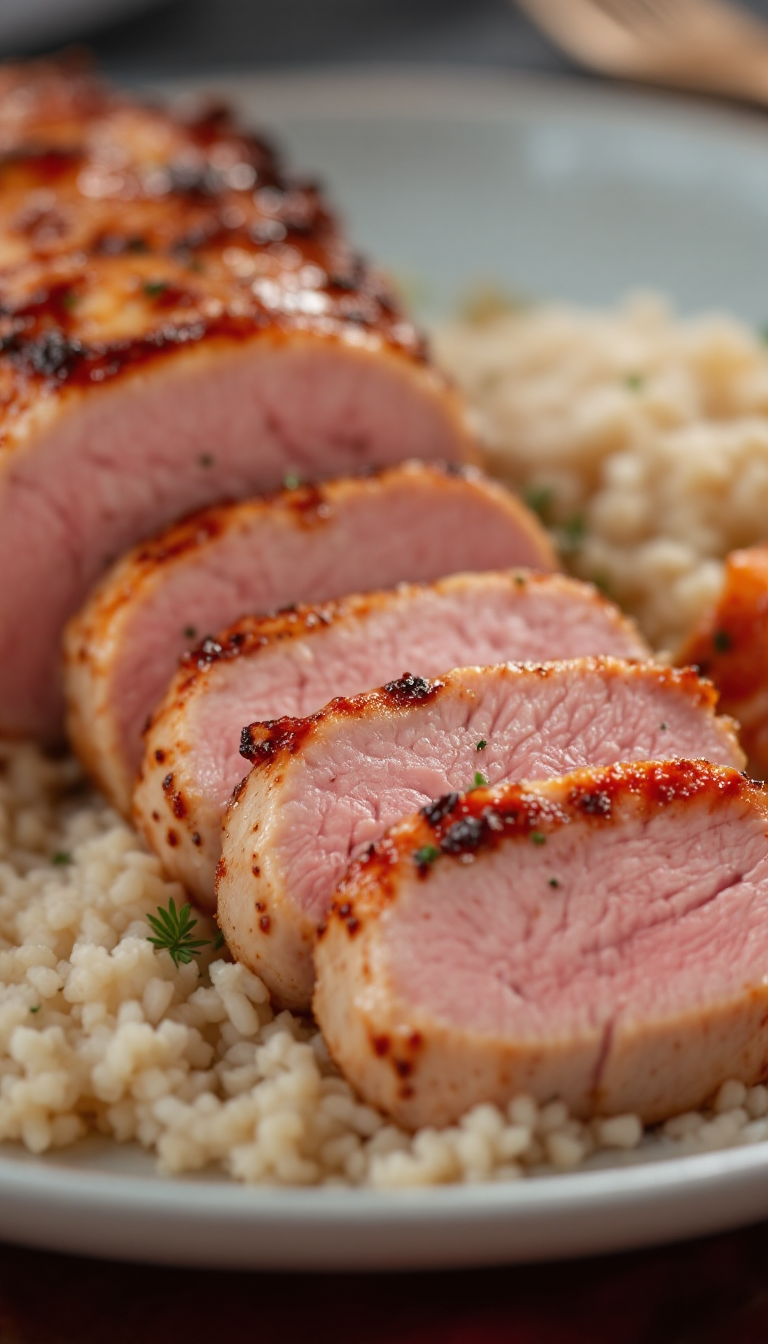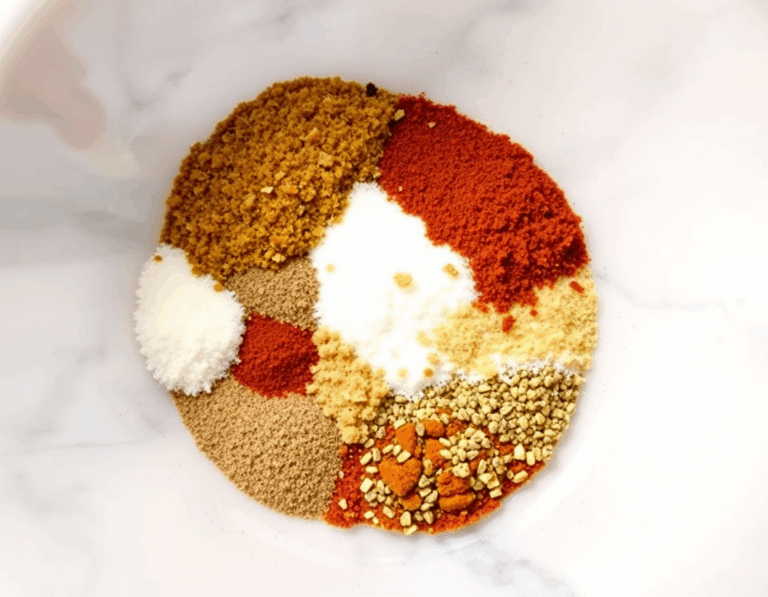
Pork tenderloin—it’s like the unsung hero of easy, healthy meals, isn’t it? This juicy, baked rendition might just make you a believer if you aren’t already. I remember the first time I made it, the aroma was so inviting that even the cat sat by the oven, hoping for a taste.
Imagine that! It’s perfect for those evenings when you’re craving something hearty but don’t want to spend hours in the kitchen.
Steps
- Preheat your oven to 400°F, ensuring the rack is positioned in the middle. Prepare the pork tenderloins by trimming any excess fat and removing the silver skin. Pat them dry using paper towels.
- In a small bowl, combine brown sugar, smoked paprika, garlic powder, onion powder, chili powder, Italian seasoning, salt, and pepper to create a spice rub. Evenly coat the tenderloins with this mixture.
- Place the seasoned pork tenderloins in a 9×13-inch baking dish. Distribute pieces of butter on top of the meat.
- Bake the pork in the oven, uncovered, for approximately 25 minutes, or until the internal temperature reaches 145°F. Allow it to rest for 5-10 minutes post-baking to retain juices.
- Slice the rested tenderloins into medallions. Drizzle with pan juices for added flavor and garnish with chopped parsley if desired.

Ingredients
- 2 pork tenderloins (approximately 1 pound each)
- 2 tablespoons brown sugar
- 1 teaspoon smoked paprika
- 1 teaspoon garlic powder
- 1 teaspoon onion powder
- 1 teaspoon chili powder
- 1 teaspoon Italian seasoning
- 1 teaspoon salt
- 1/4 teaspoon black pepper, or to taste
- 1/4 cup unsalted butter, cut into pats
- Chopped parsley, optional for garnish
Nutritional Values
Calories: 1620kcal | Carbohydrates: 30g | Protein: 64g | Fat: 26g | Saturated Fat: 14g | Polyunsaturated Fat: 2g | Monounsaturated Fat: 8g | Trans Fat: 2g | Cholesterol: 238mg | Sodium: 1068mg | Potassium: 1262mg | Fiber: 2g | Sugar: 8g | Vitamin A: 1018IU | Vitamin C: 2mg | Calcium: 48mg | Iron: 4mg
FAQ
- What makes this baked pork tenderloin recipe unique?
- This recipe is unique because it doesn’t require searing the meat before baking, which minimizes the risk of overcooking or drying out the pork tenderloin. It’s cooked in a single baking dish, making for fewer dishes and an easier cleanup.
- Is it necessary to sear pork tenderloin before baking it?
- No, searing is not necessary for this recipe. Contrary to popular belief, searing does not seal in juices and can actually lead to drier meat. This recipe skips the searing step to maintain juiciness.
- Can I substitute pork loin for pork tenderloin in this recipe?
- No, pork loin and pork tenderloin are different cuts of meat and are not interchangeable. Pork tenderloin is leaner and cooks faster than pork loin.
- How should I store and reheat leftovers?
- Leftover pork tenderloin should be stored in an airtight container in the fridge for 3-4 days. To reheat, warm it in a saucepan over low heat or microwave in short increments to avoid drying it out. Freezing individual portions is also an option for up to three months.
- What can I use as a substitute for butter in this recipe?
- You can replace butter with a generous drizzle of olive oil if needed. This will still help to keep the meat juicy while baking.
Tips
- Use an instant-read thermometer with a probe to ensure the pork tenderloin reaches the perfect internal temperature of 145°F. This tool helps you avoid overcooking, keeping the meat juicy and tender.
- Allow the pork tenderloin to rest for 5-10 minutes after baking before slicing. This step is important as it helps redistribute the juices, ensuring the meat remains moist and flavorful.
- Customize the spice rub to suit your taste preferences. If you prefer a bit of heat, consider adding cayenne pepper, or use your favorite pre-made seasoning blend for convenience.
- If you need to substitute the butter, a generous drizzle of olive oil can be used instead, maintaining the juiciness of the pork throughout the cooking process.
Equipment
- 9×13 Baking Dish – A specific size that might not be available in every household.
- Instant Read Meat Thermometer – Essential for ensuring the pork reaches the safe internal temperature of 145F without overcooking.
